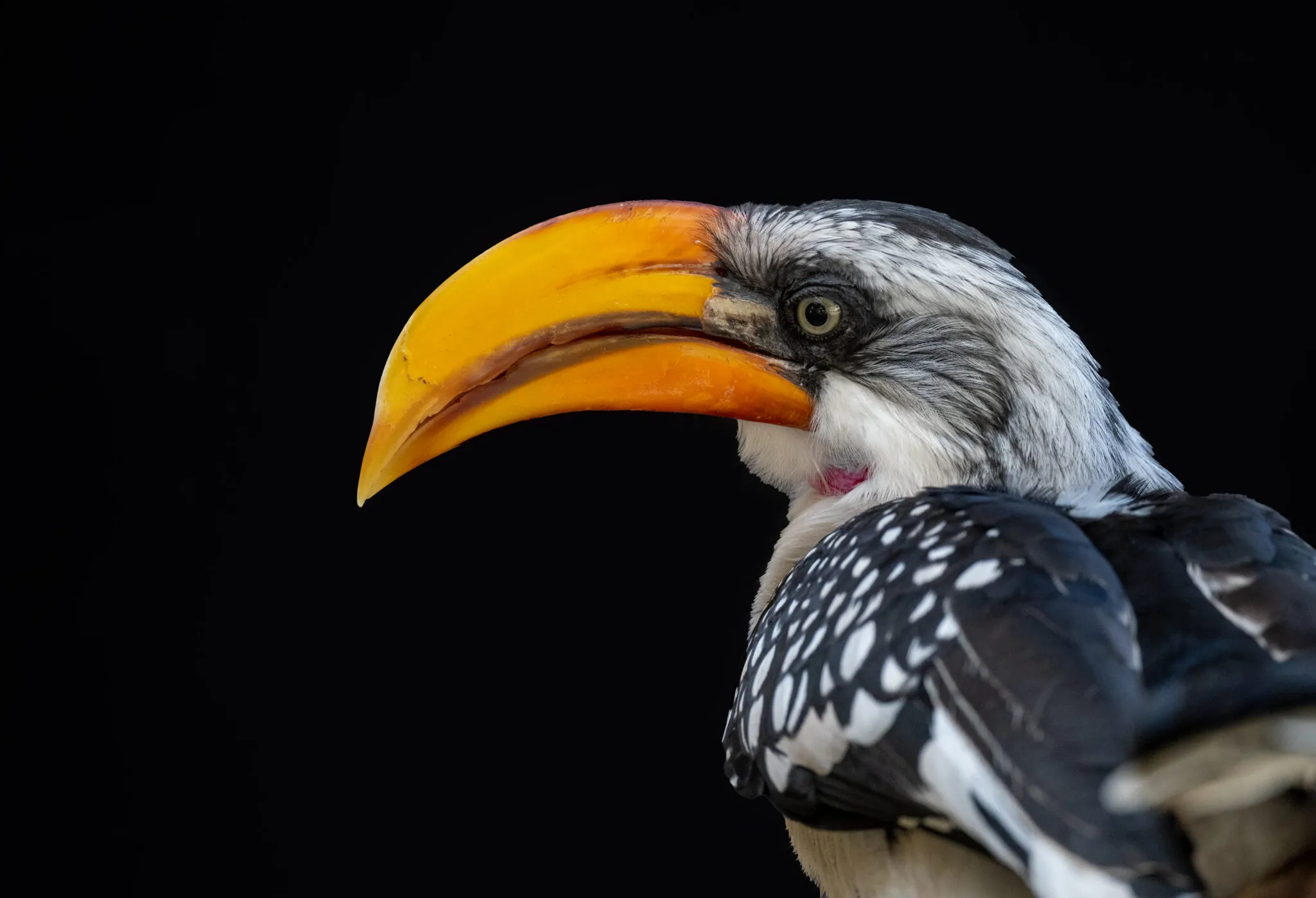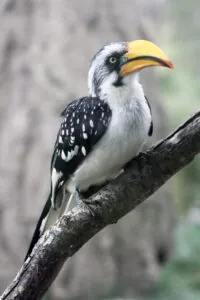-
Menu
- Plan Your Visit
- Meet The Animals
- Check Out Events
- Memberships
- About The Zoo
- Support the Zoo
- Conservation
- Education
- Groups & Private Events
- Zoo News
- Contact
- Indianapolis Prize
- Global Center for Species Survival
- Schedule
- Donate
- Membership
- Tickets

- Plan Your Visit
- Meet The Animals
- Check Out Events
- Memberships
- About The Zoo
- Support the Zoo
- Conservation
- Education
- Groups & Private Events
- Zoo News
- Contact
- Indianapolis Prize
- Global Center for Species Survival

Eastern Yellow-Billed Hornbill
Tockus flavirostris
About
Yellow-billed hornbills are one of dozens of species of hornbills, birds that all have a thick, curved beak. The yellow-billed hornbill has a yellow beak with an overlay of keratin protein on it called a casque. Keratin is a strong protein also found in human hair and fingernails. Their large bill is well adapted to eat just about anything that lives in the savannas and woodlands of eastern Africa: fruits, seeds, insects and other small animals. To support their heavy bill, hornbills are equipped with a strong neck!
Hornbills make nests in tree hollows. The female lays two or three eggs inside the hollow, then stays inside with them. The male builds up a wall of mud on the outside. He feeds the mother through a small hole in the mud while she incubates the eggs!
Hornbills hang out with an animal called a dwarf mongoose. The mongoose turns up insects that the hornbill eats, and the hornbill makes a loud call that alerts the mongoose to predators.

Conservation
Eastern yellow-billed hornbills are not threatened with extinction, but their populations are decreasing because deforestation and climate change. To help combat climate change, the Indianapolis Zoo participates in AES’s Green Power Offset Program. Indianapolis residents also can help offset carbon that they’re burning in fossil fuels through this program.
The Indianapolis Zoo also supports conservation efforts for a threatened hornbill species, the northern ground hornbill in Senegal, through the Mabula Ground Hornbill Project.
WHERE ARE THEY AT THE ZOO?

